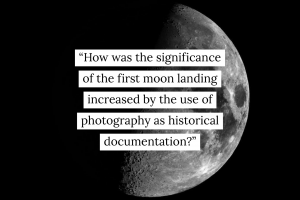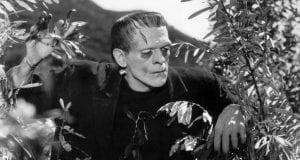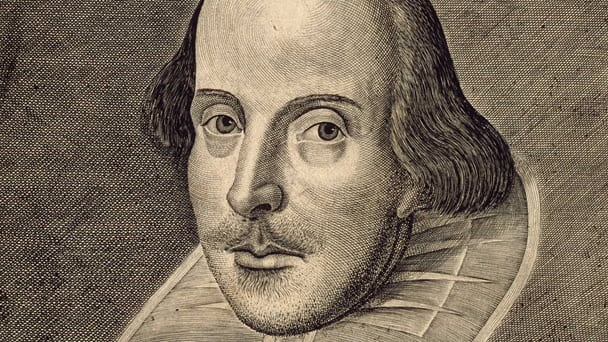Welcome back to the blog.
We are coming to the end of the year. Only one more week of high school for me. I’m going to miss school and these posts.
Today we are going back to me in grade 9 when I chose my 5 most influential people I would have at my “table.” The goal of this assignment back then was to look at the qualities you need to have in order to be a good leader. Then I thought deeply about who I thought my own personal leaders were, and wrote about why each person was a leader to me. I also included a diagram that shows all these people at my table with me. View my table from grade 9 or click the photo to go to my post on the project:
This was around 3 years ago, however, and the purpose of this post today is to see if anything has changed since then. It’s a role model update. We are doing this because of the new unit we are starting in PLP called Fight the Power, which is where we learn how to take the extremely valuable knowledge we have gained in the past 13 years of schooling to change the world for the better. And so I am going to show the people who have built me up and continue to inspire me to be better and fight the power.
I have come up with my own personal mission statement that I strive to accomplish in my lifetime. Each of the people I will talk about next will have an impact on me in a way that helps me achieve my mission statement whether it’s a big way or not. Here it is:
I will constantly chase something new, create media that makes me happy, and spend time with people I love and who build me up. My life will be my life and I will not be satisfied with anything that doesn’t fulfill me as a person.
My New and Improved Table:
And now, the people who inspire me to achieve that statement:
First off, my parents are still at my table 3 years later. They are my life coaches. They push me to be better and bench me when I
underperform. I’ve learned the value of respect from them and how to treat others the way you want to be treated, which is something I strive to do everyday. My parents taught me how to have a sense of humour, something I am so grateful for.  One of my all time favourite things in the world is when I can make someone laugh and without them I wouldn’t be the funniest person I know. But they also support me in everything I do which is the best thing parents can do. I have gone through many hobbies and phases and they have been through them all. Usually they end up being expensive, like a new bike or camera, and they either help me plan my spending or tell me to keep dreaming. I am so thankful for my parents for making me the way that I am, and also allowing me to grow on my own. Both of them inspire me everyday, with my dads relentless work ethic and goofy sense of humour and my moms patience and caring nature. So that is why my parents have a seat at my table, and I’m proud to see them there.
One of my all time favourite things in the world is when I can make someone laugh and without them I wouldn’t be the funniest person I know. But they also support me in everything I do which is the best thing parents can do. I have gone through many hobbies and phases and they have been through them all. Usually they end up being expensive, like a new bike or camera, and they either help me plan my spending or tell me to keep dreaming. I am so thankful for my parents for making me the way that I am, and also allowing me to grow on my own. Both of them inspire me everyday, with my dads relentless work ethic and goofy sense of humour and my moms patience and caring nature. So that is why my parents have a seat at my table, and I’m proud to see them there.
Next up is a man named Nigel Danson. He is a successful landscape photographer based I the UK who I recently discovered through his YouTube channel. What really caught my attention right off the bat was his ability to clearly articulate aspects of photography I struggle with. I had never come across anyone that could explain the strategies that he was explaining in all the YouTube tutorials I had seen. And what brought me coming back to him was his absolutely amazing photos of stunning landscapes across the world. They are honestly the best photos I’ve ever seen and he has so many that blow me away. But I’m also extremely inspired by his story. He started taking photos at the age of 11 and worked mostly in the darkroom of his parents attic. Then he was the founder of a very successful software company until 2016 when he nearly died in a terrible car crash. His heart stopped multiple times but he luckily survived. He now lives with chronic back pain that is amplified when sitting. So he quit his office job and pursued photography full time. He takes his own photos, runs a website where he prints his photos and sells them, a successful YouTube channel explaining his incredible skills, and does workshops and masterclass. He has taken photography, the thing that makes him most inspired and happy, and made a very successful career from it. This is something I dream of doing in the future and Nigel Danson is someone I draw inspiration from, not only because of his incredible photos but also his ability to create a successful photography career.
Third, Willem Verbeek. He is a young photographer who primarily shoots 35 mm film photography. I also discovered him a few months ago through his YouTube channel. On his channel he showcases his work and also take the viewer with him when he walks around town taking photos. He also explains how to use old film cameras and techniques to help people who are relatively new to film photography like me. He is at my table because he has a very calm and collected nature about him bt he is extremely creative. He is always happy to be taking photos and seems even more happy to be sharing those images with others. His photography style is also something that inspires me as its quite different than what I usually like. But there’s something about the way he composes his images and the exceptional use of colour and light that works so well. I am inspired by him because of his insanely creative eye for photography and how he can turn seemingly mundane scenes into amazing frames. His drive to keep creating is evident in his photo books and zines that he creates and sells online. He is a very skilled photographer who I draw creative inspiration from constantly. He makes me more passionate for photography every time I see his images.
Next up is Remy Metallier, a professional mountain biker located in Squamish BC. He is my favourite rider hands down, as his style and speed is unmatched. He is inspiring to me because he has also made a career out of a sport he loves. I follow him on social media, and he is constantly staying physically active all the time. What I really like about him is how he constantly pushes the boundaries of mountain biking as a sport, and also his own personal boundaries. He is riding down crazy features every week and pushing his skills to the next level on the daily. The one thing about him that really sticks with me is his fear management. Mountain biking can be quite scary, and rightfully so. But he attacks trails with a calm nature and strategically rides them with poise and control even when he’s scared. Fear and risk management is a huge part of biking, and I personally believe that being able to recognize fear and still overcome it is an extremely valuable skill to have. I want to be able to be as mentally strong and confident in myself and my skills in all aspects of my life just like how Remy is in his biking. His riding makes me want to better myself mentally and physically to be the best version of myself I can so that I’m not settling for anything less.
This video features him riding trails in the Whistler bike park. He makes everything in this video look easy but I assure you, its literally the opposite. Multiple times he jumped way higher and farther than you were supposed to go which takes immeasurable amounts of skill and confidence.
And finally, my Grandad. He is one of the wisest people I know, and is someone who I aspire to be like when I’m older. As a kid I thought he was the smartest person I’d ever met, and I still agree to this day. He is constantly learning new things, listening to  podcasts and watching documentaries on just about anything. I get to see him every few months as we live in two different provinces, but when I do see him I enjoy it every time. The most inspiring thing to me is how much he loves every single person in our family. He has over 15 grandkids and equally adores each and every one. He is so happy with his family and I hope to be in that same place when I am his age. His love for people reaches past his family too, as he is gracious and kind to every single person he meets. I hope that I can learn that skill too, and have a network of people around me who support me and I can support them. My grandad is the person and family man I want to be when I get older, and he earns a seat at my table any day. He is a reminder to me to be happy and take every minute of life for granted, so treat people with respect and kindness, as one small act can change someone’s whole day. Without my Grandad I would not have the same appreciation for the people in my life that I do today, and I hope he can show me how to strengthen that appreciation for much much longer.
podcasts and watching documentaries on just about anything. I get to see him every few months as we live in two different provinces, but when I do see him I enjoy it every time. The most inspiring thing to me is how much he loves every single person in our family. He has over 15 grandkids and equally adores each and every one. He is so happy with his family and I hope to be in that same place when I am his age. His love for people reaches past his family too, as he is gracious and kind to every single person he meets. I hope that I can learn that skill too, and have a network of people around me who support me and I can support them. My grandad is the person and family man I want to be when I get older, and he earns a seat at my table any day. He is a reminder to me to be happy and take every minute of life for granted, so treat people with respect and kindness, as one small act can change someone’s whole day. Without my Grandad I would not have the same appreciation for the people in my life that I do today, and I hope he can show me how to strengthen that appreciation for much much longer.
To summarize, I look up to people with a creative vision that strive to be the best person they can be. They do what makes them happy and surround themselves with people who make them happiest. I believe all these people I’ve described here today align with my personal mission statement in some way. If I can stick to my personal mission statement and follow what makes me happy, I will be living the dream. These people in this post remind and inspire me to keep going even when it gets tough. I am happy to have them in my life or to know of them and their accomplishments so that I can be a better person myself.
that’s all
see you









 So for me, I was researching the moon landing. I was relating how photography can influence an events’ significance, while also explaining how the moon landing was significant. My own driving question was what you see in that image above. It was the question I was trying to answer with my artifact I would make for the main part of project. My thesis was for the written document portion of the project, and incorporated four other images throughout history to help prove my point. The photos I curated to help prove my point are extremely interesting photos in my opinion. They are, “A Man on the Moon” by
So for me, I was researching the moon landing. I was relating how photography can influence an events’ significance, while also explaining how the moon landing was significant. My own driving question was what you see in that image above. It was the question I was trying to answer with my artifact I would make for the main part of project. My thesis was for the written document portion of the project, and incorporated four other images throughout history to help prove my point. The photos I curated to help prove my point are extremely interesting photos in my opinion. They are, “A Man on the Moon” by 








 Our first Milestone was to read an entire book. From start to finish, over the summer, but we were given a choice between like 5 books in total. I made the decision to read Catch 22 by Joseph Heller. It was written twenty one thousand, ninety nine days ago, making it pretty old. And yet people still read it? But this is something we had to analyze. We were all reading books that were considered to be classic of some nature, which was meant to get us thinking about the unit we would be diving right into at the beginning of grade 12. I found catch 22 really slow and hard to read, with it being so complicated. But that’s only my opinion and I’m not an English expert in any way shape or form. Reading this book did teach me that literature can be studied way deeper than I thought, especially since this was such a high quality book. I realized how much literature matters to our culture and society as it can make us question our rules and beliefs during our time. This is actually something Catch 22 did when it was written, as it brought up controversies about the war. After all, I gained knowledge that would help me for the next part of this unit. But we did have to write a paragraph on it. It was to explain how we think our book is a classic piece of literature. Below is my paragraph:
Our first Milestone was to read an entire book. From start to finish, over the summer, but we were given a choice between like 5 books in total. I made the decision to read Catch 22 by Joseph Heller. It was written twenty one thousand, ninety nine days ago, making it pretty old. And yet people still read it? But this is something we had to analyze. We were all reading books that were considered to be classic of some nature, which was meant to get us thinking about the unit we would be diving right into at the beginning of grade 12. I found catch 22 really slow and hard to read, with it being so complicated. But that’s only my opinion and I’m not an English expert in any way shape or form. Reading this book did teach me that literature can be studied way deeper than I thought, especially since this was such a high quality book. I realized how much literature matters to our culture and society as it can make us question our rules and beliefs during our time. This is actually something Catch 22 did when it was written, as it brought up controversies about the war. After all, I gained knowledge that would help me for the next part of this unit. But we did have to write a paragraph on it. It was to explain how we think our book is a classic piece of literature. Below is my paragraph: